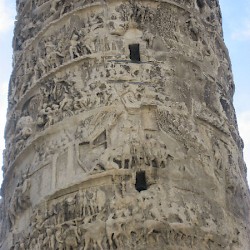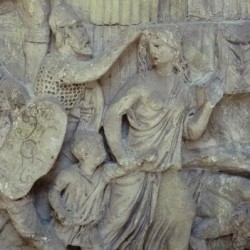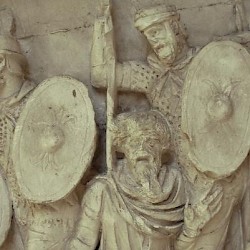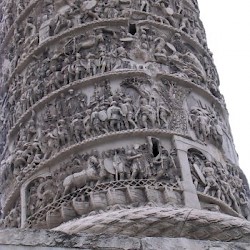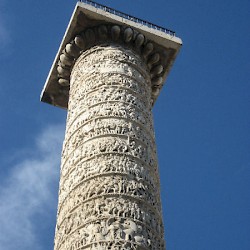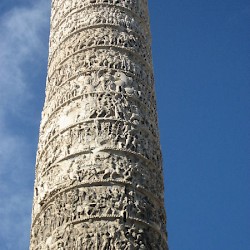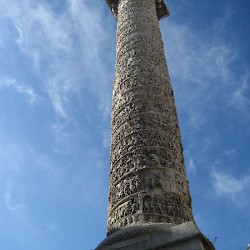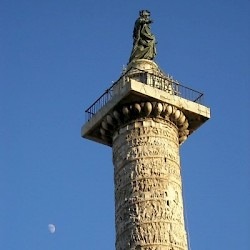Rome, Column of Marcus Aurelius
Q265384Column of Marcus Aurelius: one of the war monuments from ancient Rome.
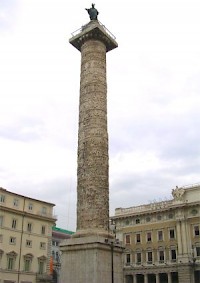
Marcus Aurelius was emperor of Rome between 161 and 180. Although he is often called the "philosopher on the throne" or the "philosopher-emperor", he was also one of the greatest warriors of the Roman empire, and might be called "a philosopher in arms" - with more justification that Alexander the Great, who did in fact receive this title. The column of Marcus Aurelius commemorates his northern war, which is probably the largest Roman war since the civil wars.
In the winter of 168/169, Marcus Aurelius attacked the tribes across the northern frontier of the empire: the Marcomanni and Quadi in Czechia and Sarmatians in Hungary. The invasion had become necessary when these tribes had invaded Italy, and even reached the Adriatic Sea near Aquileia. This was a very grave crisis.
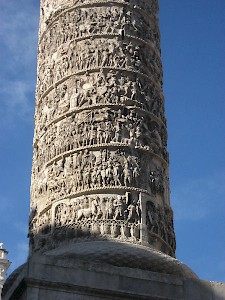
After initial setbacks, the enemies appeared to be defeated in 175, but after a brief peace, the war was continued, and Marcus died at the front, in Vindobona (modern Vienna). His son Commodus signed the final peace treaty when victory was really achieved, and erected this column as a monument to his father. It was nicknamed Centenaria, "hundredfooter", because it was 100 Roman feet or 29.60 meters high.
On the top of the column was a statue of Marcus Aurelius; today, the apostle Paul stands there. The same happened to the Column of Trajan, which was once the pedestal of a statue of that emperor, until it was replaced by a statue of the apostle Peter.
The inscription on the base of the column gives the honorific titles of the emperor.
Among those who are also represented on the relief of the column of Marcus Aurelius, are his son Commodus, who erected the monument and dedicated it to his father, and Pertinax, Marcus Aurelius' best general, and, ironically, the man who was to succeed Commodus. Unlike the Column of Trajan, which is decorated in low relief, the Column of Trajan is in high relief, which adds to the monument's realism. We can see all the disasters of the war.
During the northern war, the legion XII Fulminata (the "Thundering Legion") was surrounded by the Quadi and almost forced into surrender because the soldiers had no water. However, when disaster seemed inevitable, a heavy shower relieved the Romans. This Rain Miracle seems to have happened in 172. The full story can be read here.
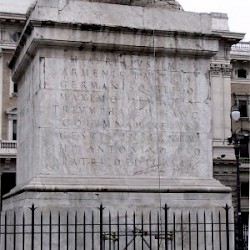 Rome, Column of Marcus Aurelius, pedestal with inscription |
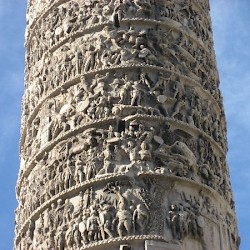 Rome, Column of Marcus Aurelius, relief |
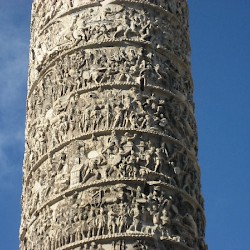 Rome, Column of Marcus Aurelius, relief |
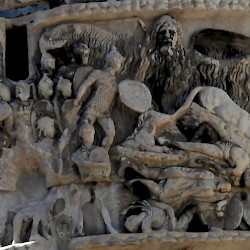 Rome, Column of Marcus Aurelius, The Rain Miracle |
